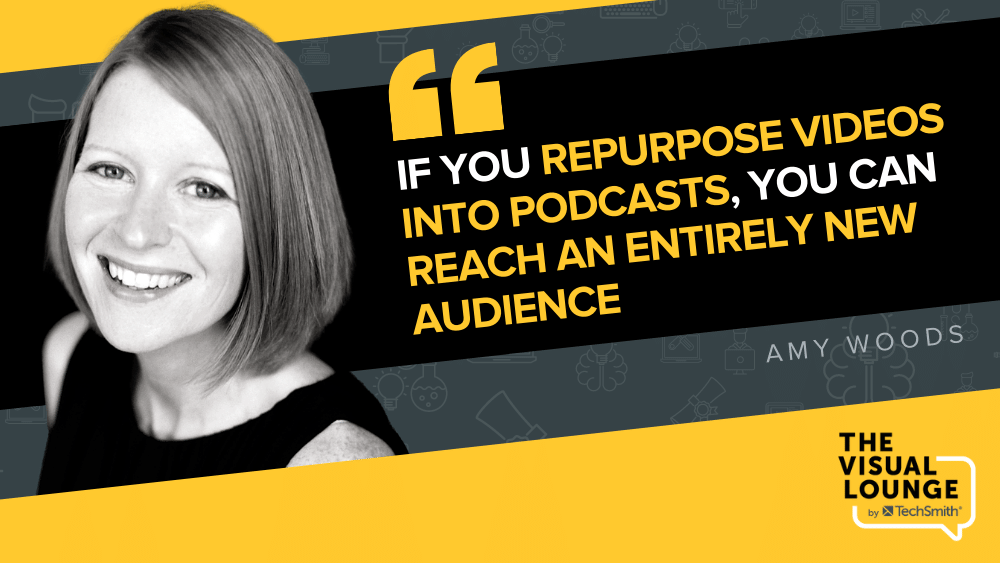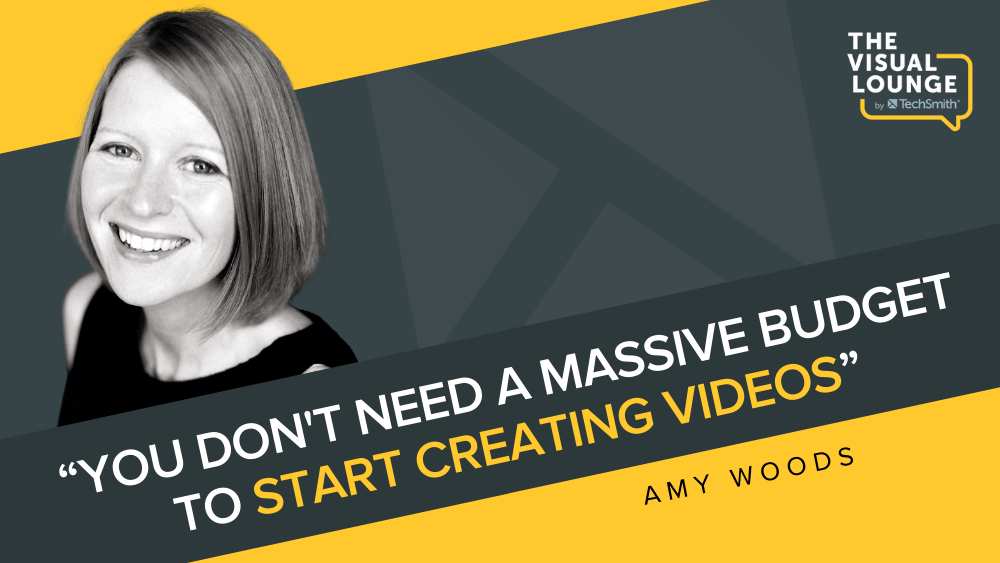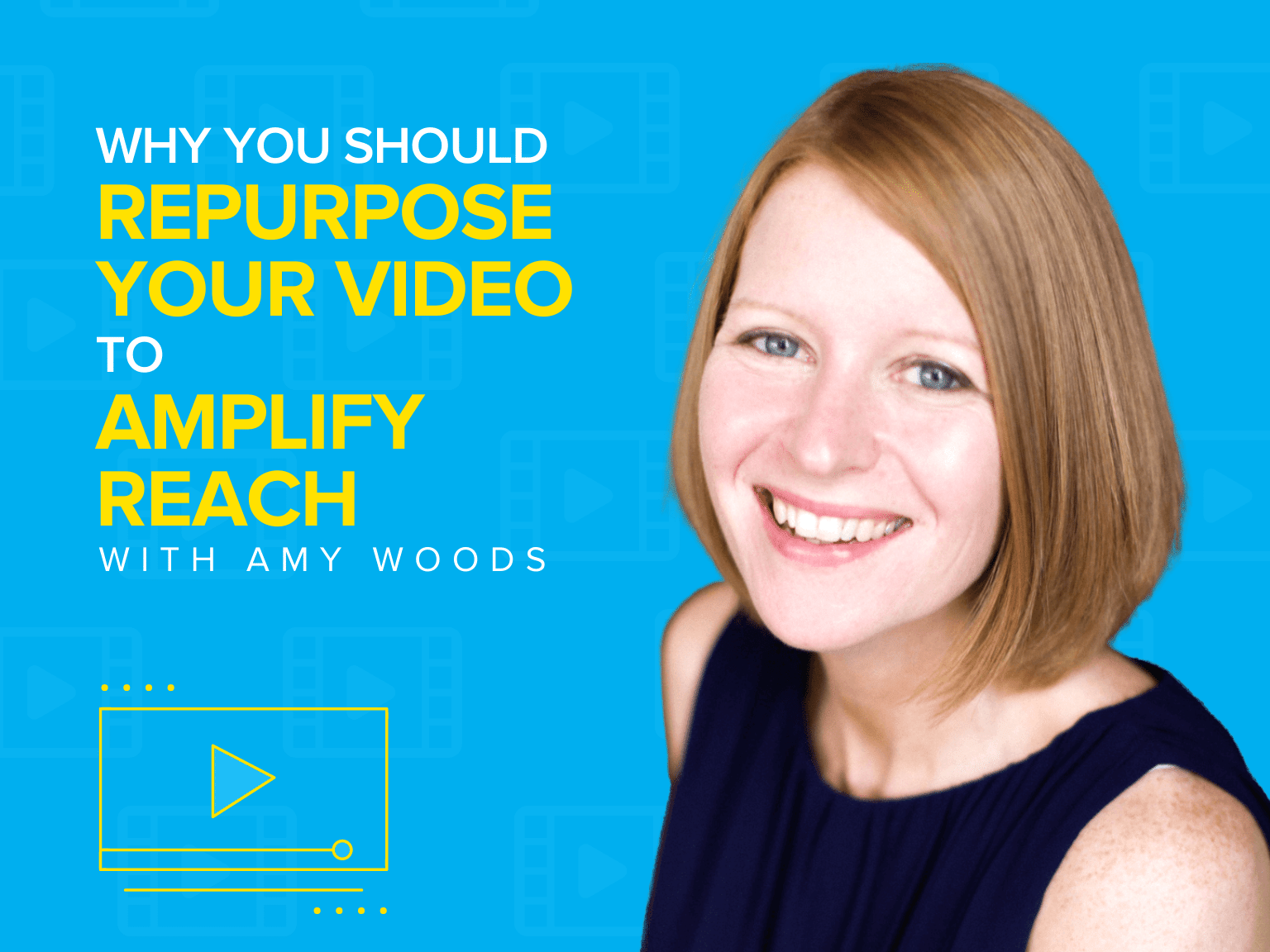How can repurposing your videos help you reach more people?
It takes a lot of time and effort to create a great video. But once you’ve published it, do you stop there and move on to creating your next video? Or do you see how much bang you can get for your buck by finding new ways to bring that video to a wider audience?
Repurposing your video, or any content you create, is a fantastic way to help more people find and engage with your content. Amy Woods is the Founder of niche creative agency Content 10x, and a content repurposing expert. She helps content creators and businesses grow their audience by maximizing their return on the content they create.
In this post, Amy reveals her tips and advice on how you can repurpose effectively. She explains what you can do to make the most of your videos and help each video you create reach a wider audience.
You can watch the video on this topic at the top of this post, to listen to the podcast episode, hit play below, or read on for more…
What is content repurposing?
Content repurposing is a strategy to help your content go further. It involves taking a core piece of content and creating multiple new pieces of content from it. Take videos, for example. You could create one long video to post on YouTube, then edit it into small segments for sharing on social media channels.
Amy believes that, to repurpose your content correctly, you need to take a creative look at your core content and highlight different angles to create new points of interest.
She stresses that content repurposing shouldn’t be confused with reposting.
“Repurposing is not copying and pasting, or just reposting the same things.”
Repurposing should be platform-specific. This means being aware of the nuances between each platform and editing your content accordingly. Even though social media platforms and YouTube both support video content, each platform feature uses different aspect ratios so you should edit repurposed videos to meet the individual platform requirements.
Why you should repurpose your videos
Repurposing maximizes your content’s reach. If your goal is to help as many people as possible or get your video in front of a wide audience, then repurposing can help you achieve this.
Amy has helped her clients grow their audience and business by repurposing their core content onto a range of platforms. She states how it’s important to consider alternative platforms and expand into new formats, for example, creating podcasts from videos.

Creating content in a completely new medium means that you can access an audience that previously was unavailable to you, and reach your goals faster.
How to repurpose your videos
Some content is much easier to repurpose than others. Videos are great for content repurposing because they’re a versatile medium.
If your video includes audio and speech, it has a lot of repurposing potential. For example, you could:
- Write a blog post inspired by the video
- Turn the audio into a podcast
- Create graphics or take screenshots of the video to share on social media
- Share quotes or thoughts inspired by the topic on social media
- Edit the video into short teaser videos and share them on social media
You could generate many pieces of content, in multiple formats, from your original video. Sharing these across multiple platforms is one way to get a wider reach, but Amy also notes that you might not want to share it all at once.
Amy’s top tip is to take an evergreen approach to repurposing. By removing time-sensitive elements, you can repurpose your video across multiple platforms for longer.
“The repurposed content can go on, not just for the week or the month afterwards, but it can be in your treasure trove, your vault of great content, and you can bring out tips and snippets, and all sorts of value in the months and years to come.”
If your video is time-sensitive, it will lose value quickly. But if your content is evergreen, and doesn’t mention times like “last week,” or “next month,” then it can continue to provide value until the information needs updating.
The best type of video to repurpose
Depending on your video, some assets will be easier to create than others. This is why Amy advocates “segmenting” your video content. This way, it becomes easier to repurpose almost any type of video.
To truly make the most of repurposing, you should think about how you’re going to repurpose your video before your record it. Amy suggests planning defined segments that can be easily pulled out and made into shorter videos for other platforms.
“Think about having the same three killer questions that you always ask your guest or the same quick-fire round. When you repurpose that video content, you could always use that same segment to create a one-minute Instagram teaser, for example.”
If you’re creating instructional videos or sharing your thoughts in a thought-leadership-style video, then consider how you could structure your video to pull out segments. List videos, for example ‘5 Questions You Need To Ask Before You Make a Video’, are easy to repurpose because you can pull out just one question and answer. These short, standalone videos are still valuable and helpful for your audience, without requiring you to create a brand-new piece of content.

How to build a content repurposing process
One of the key factors in effectively repurposing is to develop a system that works for you. This way, you can ensure that you’re consistently getting the maximum amount out of your content, and not missing any elements out.
Amy’s repurposing method relies on a set structure for her episodic content. She knows how hard it can be to repurpose when you’re excited to create the next new video, but she stresses how a process helps keep her on track.
“Make a rule with yourself that you have to take everything off that process checklist before you allow yourself to go on and create the next piece.”
You could use a project management tool (Amy uses Trello) to track your progress and solidify a structure that works for you. But Amy also points out that repurposing can be a very big job, so before you dive into creating a vast amount of repurposed content, she advises to work on consistency first.
“Try not to do everything. Just try to be consistent. […] Don’t try and take on too much. Build habits first, build the process that you’re going to follow, and make that habitual.”
Start by choosing one element to repurpose from your video. You could set a goal to create three teaser videos from every video you create and share them on social media. Once this becomes a regular habit, you can add in another part to the process, and repeat.
Amy’s final thoughts
When it comes to any kind of content strategy, Amy believes that it’s a long game. But by reinvesting in your own efforts, and staying consistent with your repurposing approach, you’ll start to see growth.
She left us with these final words of wisdom:
“Really think about why you are creating the content in the first place. Don’t be so quick to go and create the next piece of content if you haven’t got the most out of each piece of content that you’ve already created. […] Just take it one step at a time, and you’ll see the results.”
If you’re ready to pick up the camera and start creating videos, we can help. Learn how to write a video script, start storyboarding, make a screen recording and more at the TechSmith Academy.
For more expert advice and tips visit TechSmith Academy on YouTube or listen to the Podcast.





